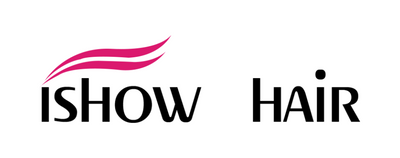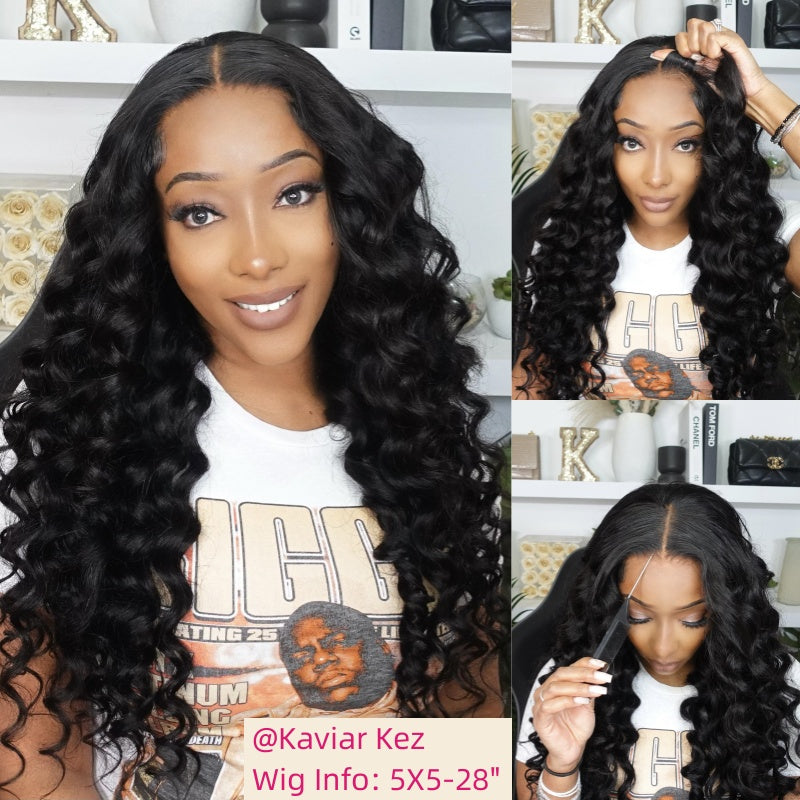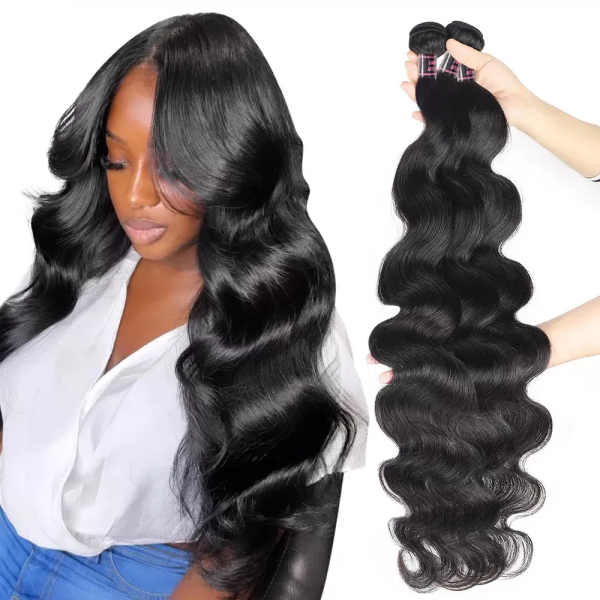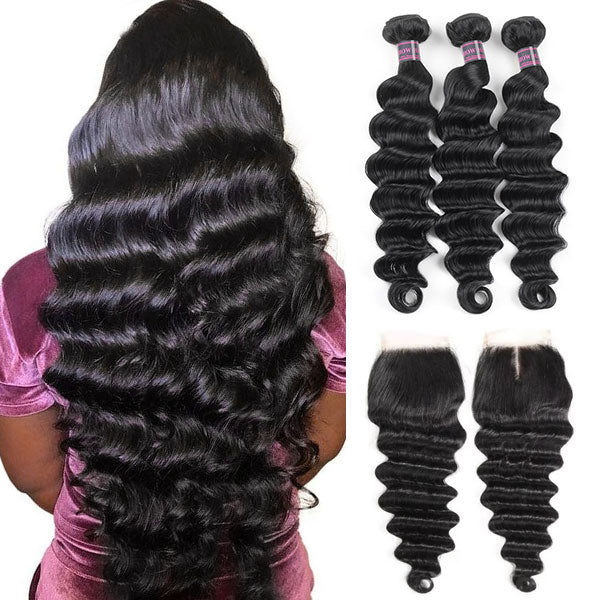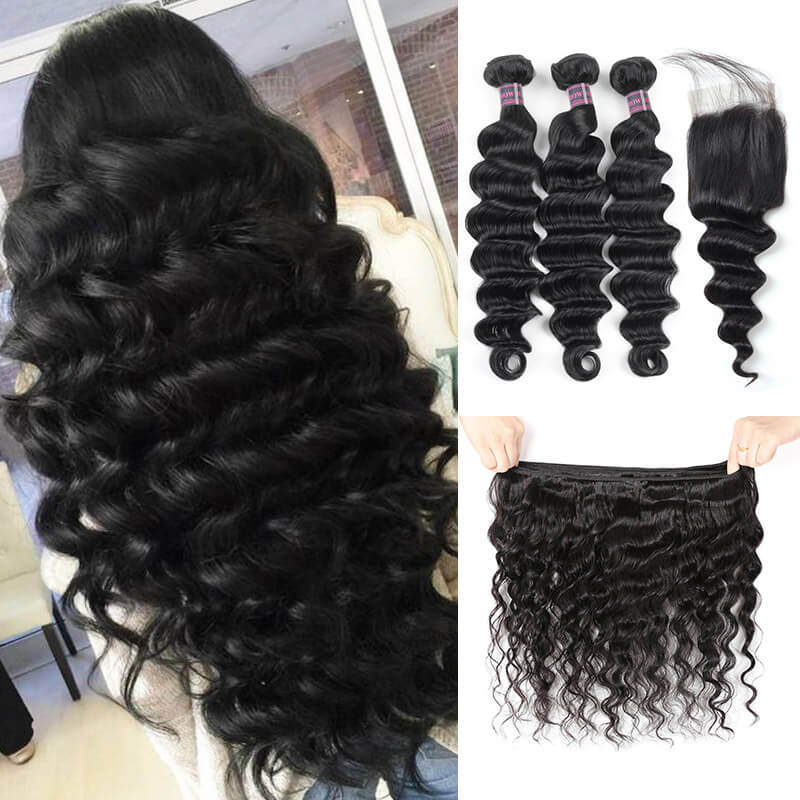What Are the Differences Between Glueless Wigs and Traditional Wigs?
Wigs are a big help for many people, whether they want to try a new hairstyle or need to cover up hair loss. Traditional wigs often need glue to stay on, but newer glueless wigs don't, making them a lot simpler to use. This article breaks down how glueless wigs and traditional wigs differ in several key ways: how you put them on, how secure they feel, how comfortable they are, and how much care they need. We'll walk you through these points so you can pick the best wig that works for you and your daily life.
What Are Traditional Wigs?
Traditional wigs are the long-established type of wig that most people are familiar with. They're made to mimic natural hair and require a bit of work to put on, often needing glue or tape for a secure fit. It might be a bit challenging at first to get them positioned just right, but they're known for staying in place really well once they're set. These wigs are a go-to for daily wig wearers because they don't shift around easily. You can pick from lots of different styles, which makes it fun for those who like to change their look often.
What Are Glueless Wigs?
Glueless wigs are exactly what they sound like: wigs that don't need any glue to stay put. They come with built-in features like straps or clips that you can adjust to make sure the wig is snug on your head. They're all about convenience. You can put one on quickly without making a mess, and it's just as easy to take off. Glueless wigs are versatile in style, too, but they're especially great for people who want a no-fuss option or for someone who's always on the move and needs to get ready fast.

Key Differences Between Glueless Wigs and Traditional Wigs
When choosing between a glueless wig and a traditional wig, it's important to understand the differences that could affect your daily routine and overall experience. Here's what sets them apart:
Application Method
Glueless lace wigs are designed for simplicity. They come with features like adjustable straps and small combs or clips that snap into place around your head. This means you can slip the wig on, secure it, and go about your day in just minutes. On the other hand, traditional lace wigs often require more time and precision. You'll need to apply special adhesives, align the wig perfectly with your hairline, and wait for it to set before you're ready to head out.
Security
While traditional lace wigs provide a strong hold due to the adhesives, they might feel too tight for some people. However, this secure attachment is ideal for those who are active or need their wig to stay put for long periods. Glueless wigs, though typically secure enough for everyday activities, might need some readjusting now and then, especially if you're on the move a lot.
Comfort
The comfort level of glueless lace wigs is a big plus. They eliminate any discomfort from adhesives, which can irritate your scalp or cause allergic reactions. Since they're not glued down, they also tend to feel lighter and allow your scalp to breathe more throughout the day. Traditional wigs, with their need for adhesive, might not be as kind to your skin, particularly if you're wearing them for extended times.
Hair and Scalp Health
Without the harsh chemicals found in some adhesives, glueless wigs are generally better for the health of your hair and scalp. There's less risk of damage like hair breakage or scalp irritation, which can happen with traditional wigs if the glue pulls at your natural hair or if you have a reaction to the adhesive.
Maintenance
Cleaning your wig is a big part of keeping it looking great. Glueless wigs make this job easier because there's no glue residue to deal with. You can simply take the wig off and clean it according to the manufacturer's instructions. With traditional wigs, you might spend extra time getting rid of adhesive buildup, which can be a sticky and tedious process.
Reusability
If you like to change styles often or only wear a wig occasionally, glueless wigs can be a practical choice. They're super easy to remove without causing damage, so you can switch between different looks with ease. Traditional wigs can be reused too, but the process of removing and reapplying the adhesive might limit how often you want to do this.
By understanding these key points, you can make an informed decision about whether a glueless wig or a traditional wig is the best fit for your lifestyle, comfort preferences, and the amount of time you want to invest in applying and maintaining your wig.
How to Choose the Right Wig for Every Occasion

- Choose Traditional Wigs for High-Energy Activities: In scenarios where stability is key, such as performances, fitness sessions, or competitive sports, traditional wigs prove their worth. They are often designed with more robust cap construction and secure fitting methods, like clips, adjustable straps, or even special wig glues and tapes that bond the wig to your scalp. This ensures minimal movement, so you can focus on your activity without distraction. Moreover, many traditional wigs are made with materials that can endure sweat and friction, making them durable for repeated wear under strenuous conditions.
- Choose Glueless Wigs for Frequent Style Changes: Glueless wigs are a dream come true for fashion enthusiasts and those who view hair as an accessory to be changed with their outfit. These wigs typically feature combs and elastic bands that make them easy to put on and take off without professional help. You can have a bob during the day and switch to long waves for a night out with ease. The lack of adhesive also means there's no residue left on the wig, which could limit the speed of changing styles.
- Choose Glueless Wigs for Sensitive Skin: For individuals with sensitive skin, the chemicals in adhesives can cause irritation or allergic reactions. Glueless wigs eliminate this concern entirely. They rely on mechanical fasteners, like clips and bands, which means there's nothing to irritate the skin. Additionally, glueless wigs provide better scalp ventilation, reducing the risk of sweat-induced irritation for a more comfortable wear experience throughout the day.
- Choose Glueless Wigs for Low Maintenance: Busy professionals, students, parents, and anyone with a packed schedule can appreciate the low-maintenance nature of glueless wigs. The straightforward design allows for quick and easy application, and they don't require the same level of care and upkeep as traditional wigs might need due to the absence of adhesives. Cleaning and storing them is less complicated, which can save valuable time and effort.
- Choose Glueless Wigs for Budget-Friendly Solutions: Over time, the costs associated with traditional wig maintenance can add up. Adhesives, removers, special shampoos, and conditioners - these supplementary products represent an ongoing investment. Glueless wigs sidestep most of these extra expenses. They may only require occasional washing with gentle, over-the-counter hair care products, making them a considerably more economical option in the long term.
- Choose High-Quality Wigs for Professional Looks: When your appearance can influence your professional image, investing in a high-quality wig is essential. Both traditional and glueless wigs come in premium options that feature natural hair movement, realistic hairlines, and varied parting spaces. Look for features like lace fronts, monofilament tops, and hand-tied caps, which all contribute to the illusion of natural hair growth, enabling you to wear your hair confidently in the most scrutinizing professional environments.
- Choose Glueless Wigs for Time-Saving Convenience: Time constraints are a common issue, especially in the morning rush. Glueless wigs offer a solution that respects your busy timetable. They can often be styled beforehand and simply applied in a matter of minutes without waiting for glue to dry or worrying about precision placement. This convenience means you can sleep a little longer or spend more time on other aspects of your routine while still ensuring you step out with a perfect hairstyle every day.
By focusing your decision on these key points, you can select a wig that aligns perfectly with your lifestyle, needs, and preferences:
- High-Energy Activities: Traditional wigs for unwavering security.
- Style Versatility: Glueless wigs for easy, quick style transformations.
- Skin Health: Glueless wigs for those with sensitivity concerns.
- Convenience and Simplicity: Glueless wigs for straightforward maintenance.
- Cost-Effectiveness: Glueless wigs to avoid extra spending on accessories.
- Professional Aesthetics: High-quality traditional or glueless wigs for a seamless, natural look.
- Quick and Efficient: Glueless wigs for when time is of the essence.
Extended Reading: Selecting the Perfect Wig for Any Occasion: A Complete Guide
Picking the Right Wig for Your Lifestyle
Picking the right wig depends on what's important to you. If you want something quick and easy that won't irritate your skin, go for a glueless wig. They're also less hassle to keep clean and can be better for the environment. On the other hand, if you need a wig that's going to stay firmly in place all day or for sports, you might prefer a traditional wig with glue. Keep in mind that while both types might cost about the same to start with, glueless wigs could save you money over time since they don't need as much care. Think about your own lifestyle, how much effort you want to put into your wig, and what feels best for you when making your choice.
FAQs about Glueless Wigs and Traditional Wigs
Q1: Do glueless wigs look natural?
Yes, glueless wigs can look very natural. They are often designed with a lace front or a monofilament top that mimics a natural hairline and scalp appearance. The key to a natural look is choosing the right color, density, and style that suits you, and ensuring it's properly fitted.
Q2: How do glueless wigs stay on?
Glueless wigs stay on by using various built-in mechanisms such as adjustable straps, clips, and combs that you can fasten to your own hair or wig cap. These features help the wig to grip your head securely without the need for adhesives.
Q3: How can you tell if a wig is glueless?
A glueless wig typically has adjustable straps at the back and may have clips or combs along the sides and front. It lacks any adhesive strips or areas meant for glue application. You should be able to put it on and take it off without any sticky residues.
Q4: Do you have to wear a wig cap with a glueless wig?
No, you don't have to wear a wig cap with a glueless wig, but some people choose to wear one for added comfort or to keep their natural hair neatly in place. It can also help provide a smooth surface which can make the wig look more natural.
Q5: Which type of wig is difficult to style: glueless or traditional wigs?
Neither glueless nor traditional wigs are inherently difficult to style; however, traditional wigs might be slightly more challenging because once they are glued down, restyling them can be cumbersome since you must work around the adhesive. Glueless wigs offer more flexibility for removal and styling off the head.
Q6: What type of wig is easiest for beginners: glueless or traditional wigs?
Glueless wigs are generally easier for beginners. They're simple to put on and remove without the extra steps and skills required to apply and remove adhesive, making them a user-friendly option for those new to wearing wigs.
